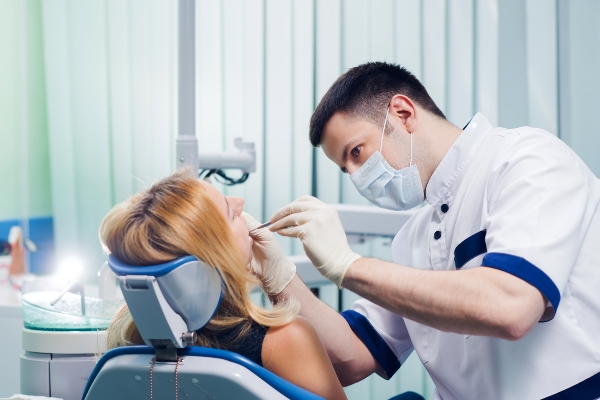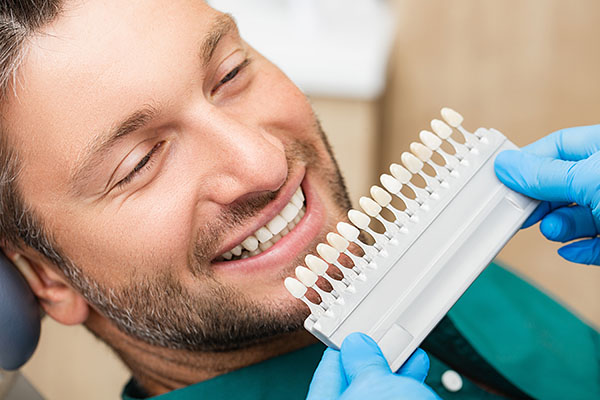 Experiencing a chipped tooth can be unsettling, prompting immediate concerns about appearance, comfort, and oral health. Fortunately, patients can significantly reduce the risk of permanent damage and complications by seeking prompt medical treatment from a dental practice. Recognizing the appropriate steps after chipping a tooth ensures effective treatment, optimal oral health, and aesthetic restoration.
Experiencing a chipped tooth can be unsettling, prompting immediate concerns about appearance, comfort, and oral health. Fortunately, patients can significantly reduce the risk of permanent damage and complications by seeking prompt medical treatment from a dental practice. Recognizing the appropriate steps after chipping a tooth ensures effective treatment, optimal oral health, and aesthetic restoration.
Immediate response and assessment
After chipping a tooth, patients should seek immediate action that will help improve treatment outcomes. Initially, rinse the mouth gently with warm water to remove any debris. In the event of bleeding, apply gentle pressure with sterile gauze. To alleviate swelling or pain, apply a cold compress externally. These preliminary steps protect the injured tooth until professional assistance from a dental practice is accessible.
Preserve any fragments
If possible, locate and secure the tooth fragments. Carefully rinse the fragments with water, avoiding harsh cleaning or scrubbing. Store them safely in milk or saline solution to maintain moisture and viability. Prompt preservation of tooth fragments enables the dental practice to explore restorative treatment options effectively, including bonding or reattachment.
Visit a dental practice promptly
Seeking professional dental care swiftly after chipping a tooth is essential. A dental practice can provide a comprehensive examination, typically involving a visual assessment and possibly dental imaging, to ascertain the extent of the damage. Delaying consultation can lead to further deterioration, potential infection, and additional complexities in treatment planning.
Treatment options and restoration techniques
Depending on the severity and location of the chipped tooth, the dental practice will recommend suitable restoration methods. For minor chips, dental bonding presents a simple yet effective remedy. Bonding involves the application of tooth-colored composite resin to repair the chip, restoring both function and aesthetics.
When more extensive damage occurs, dental crowns may be necessary. Crowns cover the entire tooth surface, strengthening its structure and enhancing its appearance. Root canal treatment might also be advisable in situations involving significant exposure of internal tooth structures, protecting against infection and further complications.
Preventive measures to avoid future injuries
Preventive actions can significantly reduce the likelihood of chipping teeth in the future. Consider adopting these simple recommendations provided by dental practice professionals. Two common recommendations include wearing a protective mouthguard during sporting activities while also not chewing on hard items like ice, candy, or pen caps. Implementing these precautions contributes greatly to maintaining tooth integrity and overall oral health.
Maintain regular dental checkups
Routine visits to a dental practice play an indispensable role in the early detection and prevention of dental issues, including tooth fractures and chips. Regular examinations enable dentists to identify potential vulnerabilities in tooth structure, offering guidance and preventive care to minimize the risk of damage.
Get a consultation today
Chipping a tooth can be alarming, yet manageable with timely, informed actions and professional dental intervention. Prompt attention, careful preservation of tooth fragments, and immediate consultation with a dental practice ensure favorable outcomes. Regular dental visits and adhering to recommended preventive strategies safeguard dental health, contributing to lasting smiles and confidence. For more information or to schedule a consultation, call Brede Ciapciak Dental.
Request an appointment or call Brede Ciapciak Dental at 781-443-8134 for an appointment in our Needham office.
Recent Posts
Regular dental checkups are the key to good oral health, as they prevent potential dental problems before they become more serious. Visiting a dental practice not only helps maintain the health of the teeth and gums but also contributes to overall well-being. Knowing what to expect before visiting a dental practice for a routine checkup…
Dental practices remain a primary resource for those seeking a healthy smile and who wish to address oral health issues in a timely manner. However, locating a suitable provider can seem challenging if you do not know what to look for. Here are five factors to consider when conducting your search.Many patients have diverse dental…
A dental emergency can happen at any time. One of the most alarming involves a knocked-out tooth. Fortunately, a dental practice can handle these urgent cases and provide the necessary care to increase the chances of saving the tooth. These offices offer immediate treatment, professional guidance, and long-term solutions to restore your oral health.If a…


